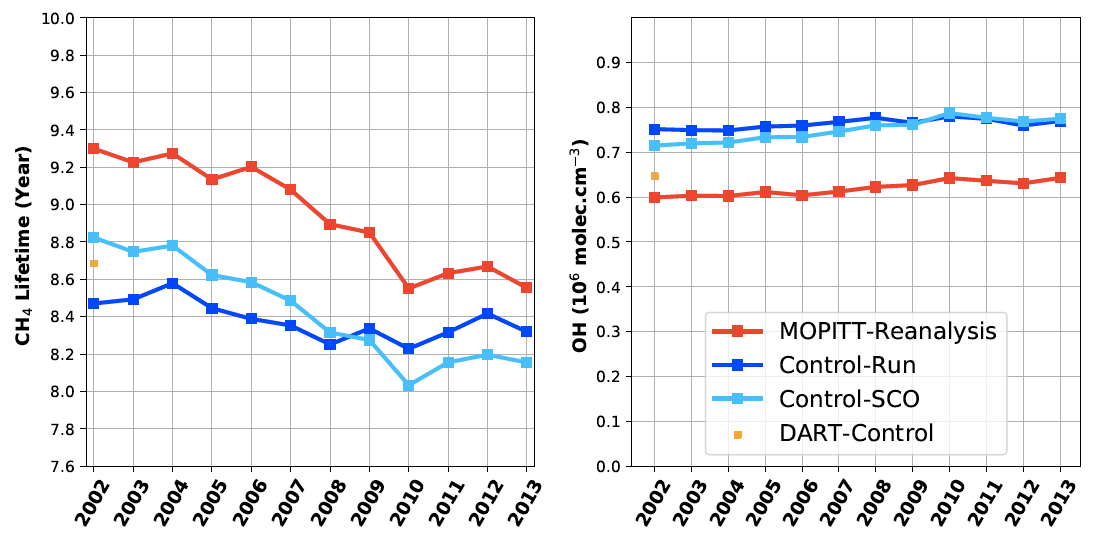3B. Chemical Feedback from Decreasing Carbon Monoxide Emissions: Lessons learned from the NCAR-ACOM MOPITT-Reanalysis
Carbon monoxide (CO) plays a critical role in atmospheric chemistry. About half of atmospheric CO is from direct emissions that are due to incomplete combustion and are related to both natural (e.g. wildfires) and anthropogenic activities. The remainder of CO in the atmosphere is produced from the chemical oxidation of hydrocarbons, mainly from biogenic sources and methane (CH4). Since most of the hydrocarbons, CO, and CH4 in the atmosphere are oxidized by the hydroxyl radical (OH), with CO and CH4 being the main sink of OH, the associated chemical lifetimes of these species are strongly coupled with OH. Understanding changes in the burden and growth rate of atmospheric OH and CH4 is critical for predicting changes in chemistry and climate. These changes have been the focus of several recent studies but the explanation still lacks scientific consensus.
We use the NSF/NCAR coupled chemistry-climate model of the Community Earth System Model (or CESM) Community Atmospheric Model with Chemistry (or CAM-Chem) to investigate the coupled nature of our chemical system through a decadal chemical reanalysis experiment (Gaubert et al., 2017). We assimilate weather observations and satellite-based measurements of CO from The Measurement of the Pollution in the Troposphere (MOPITT) across the recent decade (2002-2013) using the Data Assimilation Research Testbed (DART, Anderson et al., 2009). The assimilation of MOPITT observations constrains the global CO burden, which significantly decreased over this period by ~20%. We quantify this impact by contrasting several model simulations for 2002–2013, alternative to the NCAR-MOPITT reanalysis, to further investigate the sensitivity of OH and CO trends on CO alone and meteorology alone (Figure 1). We find that decreasing CO direct emissions result in (1) an increase in CO chemical production, (2) higher CH4 oxidation by OH, and (3) ~8% shorter CH4 lifetime. The decrease of CO observed over the decade leads to an increase in global average OH and therefore a decreasing trend in the CH4 lifetime. Such nonlinear effects further complicate the attribution to uncertainties in direct emissions alone, and must be considered when using chemistry-climate models for inversion studies of CH4.
References
Anderson, J. L., Hoar, T., Raeder, K., Liu, H., Collins, N., Torn, R., and Avellino, A. (2009), The Data Assimilation Research Testbed: a community facility, B. Am. Meteorol. Soc., 90, 1283-1296.
B. Gaubert, H. M. Worden, A. F. Arellano Jr., L. K. Emmons, S. Tilmes, J. Barré, S. Martinez Alonso, F. Vitt, J. L. Anderson, F. Alkemade, S. Houweling, and D. P. Edwards (2017), Chemical feedback from decreasing carbon monoxide emissions. Geophysical Research Letters, 44. https://doi.org/10.1002/2017GL074987
Contact
Please direct questions/comments about this page to:
Carl Drews
NSF NCAR | Research IT | ACOM
